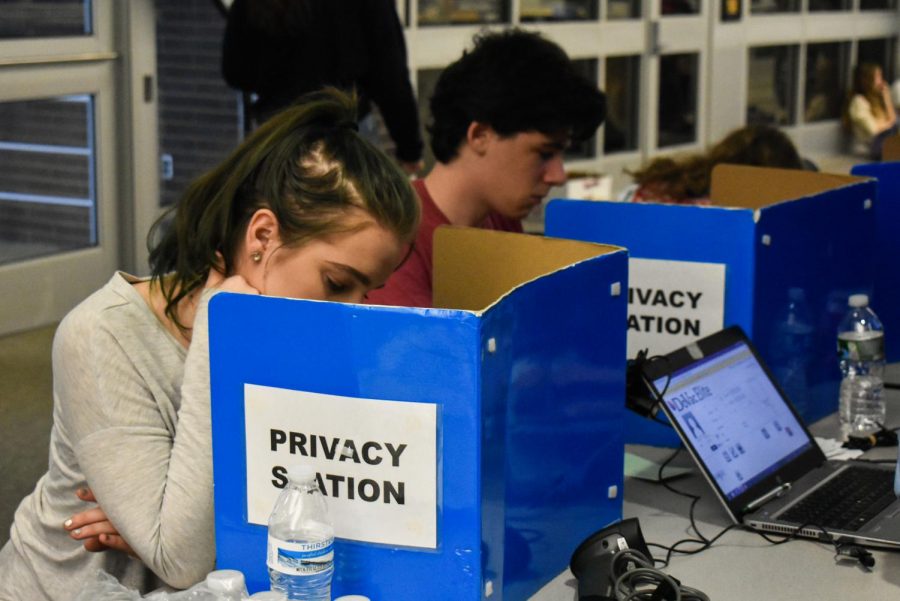NHS annual blood drive brings in 45 student donors
Juniors Chloe Zenker of Middletown and Jake Polvino of Tinton Falls fill out necessary information in preparation to donate blood. 45 students donated on Feb.13, and their blood will be sent to local hospitals and used to save up to 135 lives.
March 9, 2020
While only 45 of the 65 participants were eligible to donate, the students and relatives who did donate to the National Honor Society’s annual blood drive on Feb. 13. may have prevented 135 deaths, according to American Red Cross statistics that credit each individual donation with saving three lives.
This year, the drive was organized by senior Grace Quakenbush of Wall and junior Olivia Conkling of Marlboro in partnership with national non-profit Vitalant. The organization’s mission is to raise student awareness of the need for donors.
“That’s the point, that’s the reason for it. To start donors off at a young age at giving back,” said Vitalant employee Pat Green.
According to Conkling, the preparation for the blood drive started long before the event.
“I was elected as the assistant for the Blood Drive a couple months ago, so I didn’t start planning until [then],” Conkling said. “But I know that Grace has been planning since last year. Everything seemed super organized, and everyone seemed super happy after donating,” said Conkling.
Math teacher and NHS adviser Justine Lane, who’s managed the event for almost seven years, said the drive became very personal to her this year after blood donations helped her father, who was in the ICU this winter.
“My own father just had a transfusion of five pints of blood last month and it saved his life,” Lane said.
Junior Viviana Varlack of Manalapan, who decided to donate after hearing Lane’s story, was one of the 45 students who partook in the drive. Varlack said she “realized that it was such a simple process and [would] be willing to donate again.”
Biology and health teacher Leah Morgan shed new light on the lesser-known side of the donation process: that the blood sometimes comes with a cost to those who receive it.
While most hospitals have their own blood banks, the supply is often not enough for the number of patients in need, so the blood must be purchased from non-profit blood donation organizations like Vitalant.
“Organizations like the Red Cross collect blood and sell it to hospitals when they need it,” Morgan said.
According to the National Center for Biotechnology Information (NCBI), the average cost to the hospital per unit transfused is about $155 and $219 for the patient. The charges incurred to the hospital are passed to the patient at a higher rate to offset the charge to the hospital.
“Blood will always be needed and it does cost money to gather, test and store it,” Morgan said. “People should still donate blood and it is a very altruistic thing to do. I highly encourage it if someone is eligible.”
Lane finds joy in running the blood drive and being able to leave a valuable impression upon students every year.
“What I get to do here is set up a situation where young people give blood for the first time in a setting that is very comfortable and celebratory,” Lane said. “I’m trying to set people up to be lifelong donors.”




